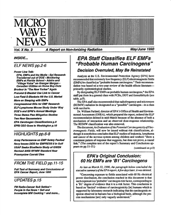News & Comment
Italians Call for a “Reevaluation of the
Safety of Non-Ionizing Radiation”

Saturday, February 27, 2016
Last updated May 24, 2016
You Say “Caution,” We Say “Precaution,”
Let’s Call the Whole Thing Off
Wednesday, January 13, 2016
Skirts Freedom of Information Act

Monday, November 30, 2015
Last updated December 1, 2015
NY Times Tech Columnist Has Hands Slapped
Friday, March 20, 2015
Last updated April 19, 2015
Germany’s Alex Lerchl Does a U-Turn

Friday, March 13, 2015
Last updated March 14, 2015

